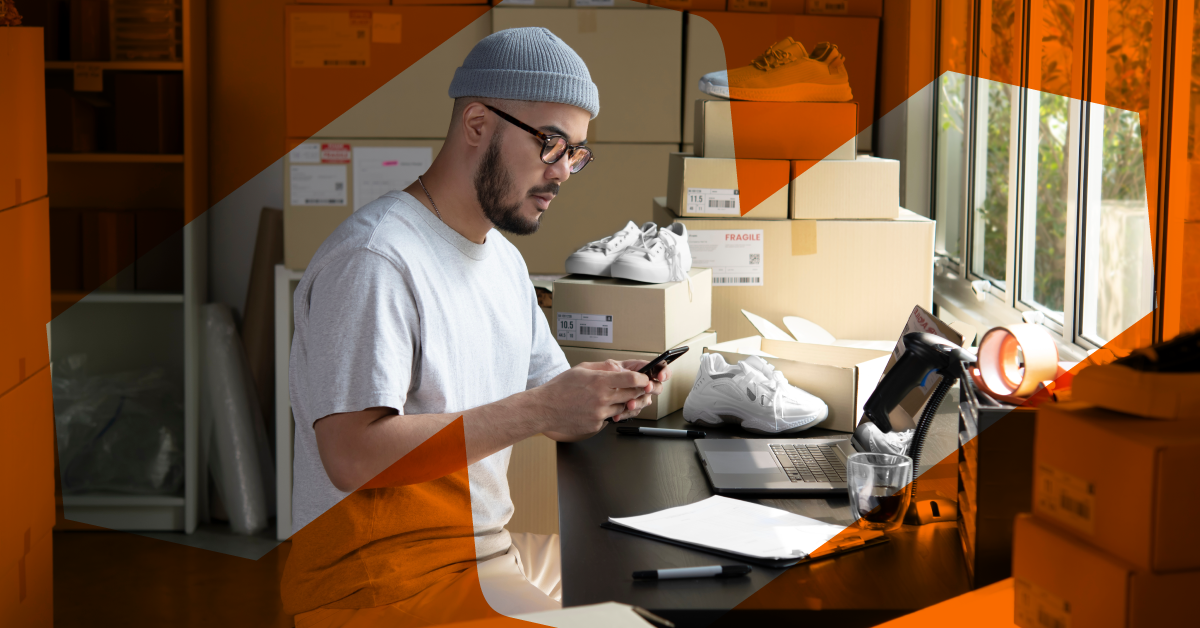eCommerce makes it easier for businesses to sell their products and services online, significantly impacting the digital economy's growth and development. Additionally, it enables small and medium-sized companies to expand their reach and compete with more giant corporations.
According to a recent report by Google, the Philippines is projected to reach $20 billion in the overall digital economy by the end of 2022. This result is after a recorded growth of 22% from 2021. Moreover, the eCommerce industry showed an adoption rate of 88% in 2022, and there would be continuous growth, attracting potential investors.
Although the eCommerce industry has an increasingly high adoption rate and offers a world of opportunities, it still poses several risks and challenges.

eCommerce in the Philippines: An Overview
eCommerce is undeniably faster and cheaper than traditional economic transactions, as it lowers friction by decreasing the cost of information exchanges. It marked down barriers for Micro, Small, and Medium Enterprises (MSMEs) by providing more opportunities for growth without needing physical stores.
Internet and platform fees replaced what used to be overhead expenses like logistics, rent, and commercial fees.
In the Philippines, such phenomenal growth came from Filipinos becoming more digitally savvy. This period happened thanks to various government policies and private sector investments in digital infrastructure. Various reports were published regarding the milestones achieved within the eCommerce industry in the Philippines. Below are some of them:
- According to the economy SEA report, Through the waves, towards a sea of opportunity, by 2035, the Philippine digital economy may hit $35 billion Gross Merchandise Value (GMV).
- Despite the partial reopening of in-store shopping, eCommerce accounts for 70% of the overall Philippine digital economy.
- In a report by the Department of Trade and Industry (DTI) - Business Name Registration Division, there were 88,574 newly registered business names for online stores at the end of 2020.
- The same DTI report also stated a 4,953% increase from the 1,753 registered business names for online stores in January to March before the quarantine.
- From 2021 to 2022, the Philippines became Southeast Asia's fastest-growing digital investments sector, with a 63% growth rate due to the developments in transport and food delivery ($1.9 billion GMV in 2022), travel ($1 billion GMV in 2022), online media ($3.1 billion GMV in 2022), and digital financial services ($6 billion in 2022).
- Next to Vietnam, the Philippines is the fastest digital economy in the region at 22% year-on-year and a 20% Compound Annual Growth Rate (CAGR) between 2022 to 2025.
- Bernadette Nacario, Google Philippines' country director, mentioned that the Philippines will be a leading investment destination, with over 70% of investors expecting deal activity between 2025 and 2030.
eCommerce Risks: What to Watch Out For
Despite its outstanding promises and excellent results from previous years, eCommerce in the Philippines still has risks and challenges that you must be aware of.
- Digital divide
The digital divide refers to the gulf between those with readily available computers and internet access and those without. Unfortunately, this concern still lingers in the Philippines, compromising economic growth and development.
To resolve the issue, the Philippine government initiated the e-Commerce Philippine Roadmap 2022, the Philippine Innovation Act (PIA), and the Innovative Start-Up Act. The country aims to open more cross-border trade and investment opportunities and foster inclusive growth through these policies.
- Physical and digital logistics
Because the Philippines has over 7,107 islands in the archipelago, the logistics industry is one of its most crucial and essential elements in transporting goods and services. A study by YCP Solidiance showed that the sector makes up 4% of the country's total Gross Domestic Product (GDP).
The eCommerce industry in the Philippines faces physical and digital logistics challenges. However, this problem comes with high costs due to gaps in infrastructure, transportation, warehousing, and systems that strengthen supply chain integration and coordination.
- Internet access
Although the government is making plans regarding the eCommerce industry, the country's slow and unreliable internet connection remains a significant barrier to achieving these goals.
According to the Internet Poverty Index, the Philippines ranked seventh in the world with the most significant number of "internet poor." The result showed that over 58 million Filipinos couldn't afford a 1GB per month internet package.
- Cybersecurity
Although Filipinos are becoming more tech-savvy over the years, they're still highly vulnerable to cyberattacks and incidents through the country's lack of data protection mechanisms. Reported attacks directing users of the eCommerce industry surged over five times from January to March of 2022, resulting in 77,092 reported incidents.
Moreover, the Philippines placed third among the Southeast Asian neighboring countries with the highest number of phishing attacks (a cyberattack in which criminals send out malicious messages containing links or attachments to gain the victim's personal information).
- Unbanked population
Despite the number of unbanked Filipino adults dropping to 34.3 million in 2021 from 51.2 million in 2019, the problem still arises, with citizens still preferring cash-on-delivery payments. If not, they use partner payment facilities like large convenience stores and e-wallets like GCash and Maya.
Lack of access to financial services hinders financial inclusion. Moreover, financial exclusion is one of the top barriers for MSMEs, a crucial matter as the country is trying to recover its economic growth. Therefore, the country's eCommerce industry needs a wide range of options regarding their needs, including savings, payments, investing, financing, or getting insured.
- Underdeveloped financial and insurance instruments
Poor financial and insurance instruments like credit insurance and trade finances are another obstacle hindering eCommerce development in the country. Filipinos need help accessing more specialized business-to-business (B2B) financial services, reducing the cost of borrowing money. This process helps trade between MSMEs be more inclusive.
- Customer experience
Improving customer experience is one of the biggest challenges to eCommerce. It's a crucial element of income generation because they bring about sales.
Common barriers in online shopping affecting customer experience are the need for in-person experience and price incentives, fulfillment and returns, ease of site usage, and quality and accuracy. Apart from this, consumers expect to be treated well or better when they buy online than when they purchase in-store.
eCommerce Opportunities: What You Need to Know
Amid the risks and challenges facing eCommerce in the Philippines, there are still compelling opportunities why businesses should operate in the country and get into the industry immediately.
- Financial inclusion and digital payments
In 2022, the country made one of Southeast Asia's highest digital payment transactions at $25.1 billion, next to Indonesia and Thailand. There has also been a quick adaption of online payment services such as digital wallets, bank or electronic fund transfers, direct debit, and QR-based payments.
As of April 2022, about 473,000 merchants participated in the QR PH person-to-merchant (P2M) payment system, allowing unbanked individuals to settle fees from various establishments.
- Growing digital-ready population
The abundance of a young, growing, and digital-ready population makes eCommerce penetration easier in the country. In a We Are Social and Hootsuite report, eCommerce adoption reached 80.2% of internet users aged 16 to 64. Moreover, roughly 80.7%, or 89 million, are active social media users.
Hence, businesses usually promote their products and services on popular social media channels and eCommerce platforms in the Philippines. This promotion paved the way for reaching target consumers more cost-effectively.
- Emerging sectors
Opportunities await emerging sectors such as health technology (healthtech), education technology (edtech), and insurance technology (insurtech), especially with the rise of paperless and seamless electronic data exchange. These technological advancements help reduce costs while applying an organized pool of knowledge and skills in various digital devices.
- Rising interest in unique goods
Filipinos are known to shop for goods from brands not available in local retailers. Before the era of eCommerce, they did this by flying abroad or ordering them from online and personal shoppers.
With the rise of eCommerce, international brands have been flocking to the country's shopping industry, introducing various products that weren't available domestically and as reachable as before. Still, Philippine-based online sellers catch the eye of shoppers by offering products that may be difficult to purchase at local or nearby brick-and-mortar shops.
- Steady middle-class growth
According to The World Bank, the Philippines saw a decline in poverty by two-thirds thanks to high growth rates and structural transformation between 1985 and 2018. By 2018, the number of the middle class increased to nearly 12 million people, and the economically secure population rose to 44 million.
The spending power of Filipinos for online purchases continues to grow stronger, with an optimistic outlook attributed to the emergence of tech-savvy upper-middle-class millennials.
- Value creation
Currently, businesses are focusing more on offering goods and services, overlooking that eCommerce has a significant potential for value creation beyond satisfying the needs towards fulfilling the wants.
The creative and other copyrights-based industries (CBIs) mainly contribute to developing digital economies. Accordingly, they adopt a joint agreement in advocating innovation and safeguarding intellectual property essential in employing the online economy's boundless opportunities for value creation.
- Strong government support
The Philippine government is extending its support in eCommerce by forming regional growth hubs, increasing the collaboration between public and private sectors, and including the industry in the Build! Build! Build! Program.
Regarding financing, DTI kept its P3 (Pondo sa Pagbabago at Pag-asenso) micro-lending program to promote micro-entrepreneurship. This project offers loans with as low as 2.5% monthly interest rates and more accessible payment terms.
On top of this, the DTI released its 2022 eCommerce Roadmap with the goal of nurturing the industry. The programs include guidance and support for aspiring eCommerce retailers, support and incentives for technological improvements, and more accessible and faster internet speeds.
The government is investing so many resources into eCommerce to develop the Philippine economy and support the surge in the eCommerce industry.
Achieve Convenience with eCommerce
An in-depth look at eCommerce guides businesses in achieving a convenient way of meeting customer demands without preparing all the basics needed in a physical store. Furthermore, with trusted payment methods and systems, companies also ensure the security of each transaction.
Before deep diving into eCommerce, it's crucial to understand its potential risks and challenges and, at the same time, be aware of the various opportunities within the industry. By learning these, you can always make more informed decisions about your next move.
In a fast-paced technological world, the success of businesses depends on their ability to adapt, or they get forgotten. Avoid this by booking a demo with RUSH, and let us help in opening your eCommerce online storefront today!

Product Marketing Manager at RUSH Technologies
RUSH's Product Marketing Manager, and a specialist in brand strategy, campaigns, and communications management, and is here to help everyone make the most of digital and social channels. When she's not working, she's sleeping...or up to something creative, or playing a sport!

Gabrielle Calpo
Product Marketing Manager at RUSH TechnologiesRUSH's Product Marketing Manager, and a specialist in brand strategy, campaigns, and communications management, and is here to help everyone make the most of digital and social channels. When she's not working, she's sleeping...or up to something creative, or playing a sport!









